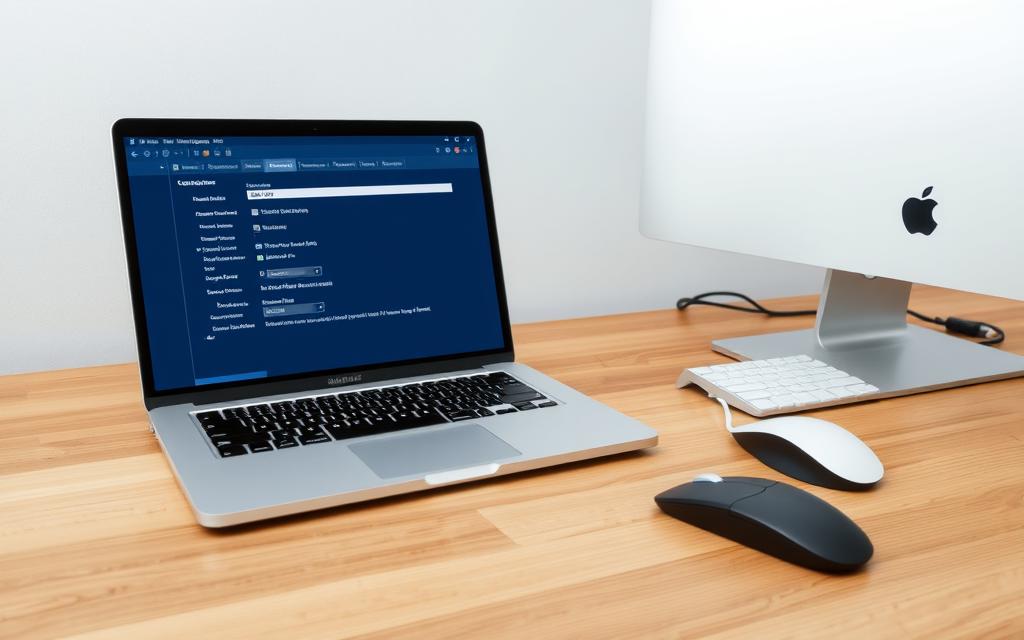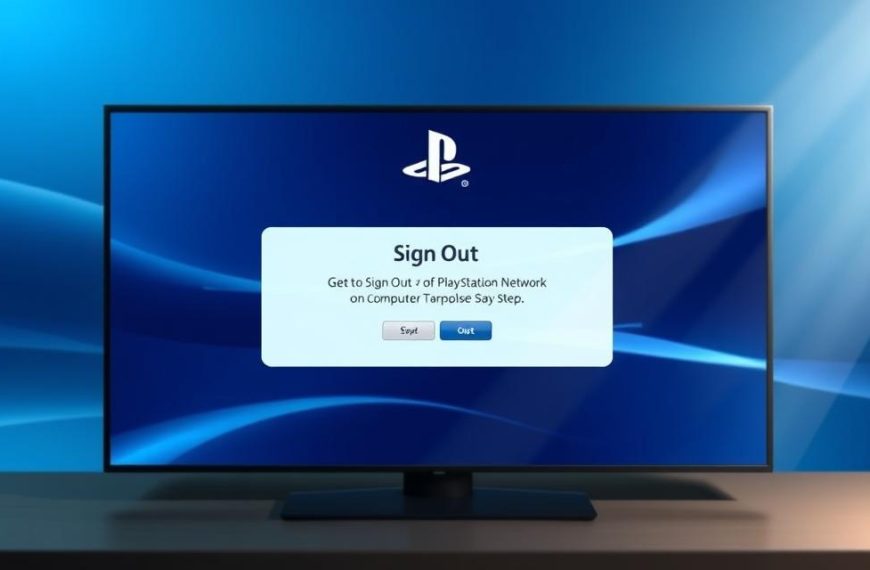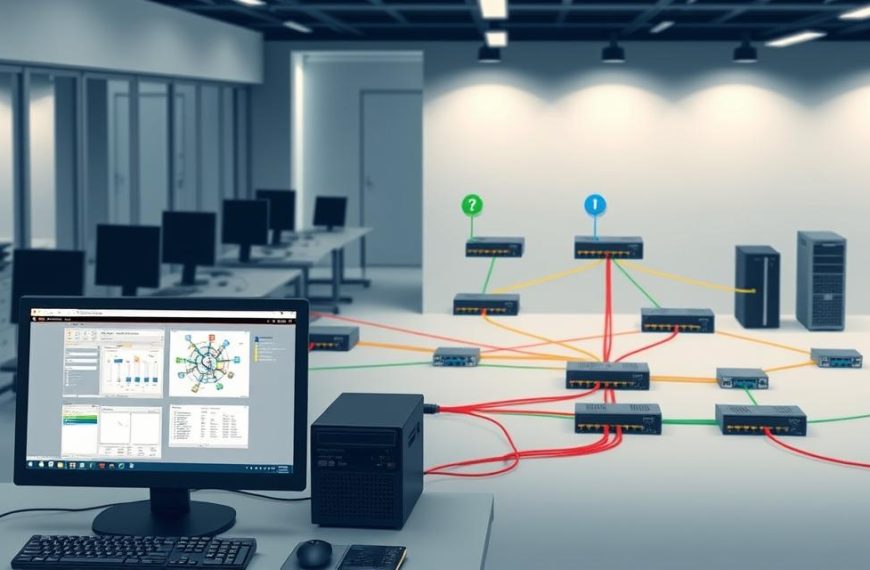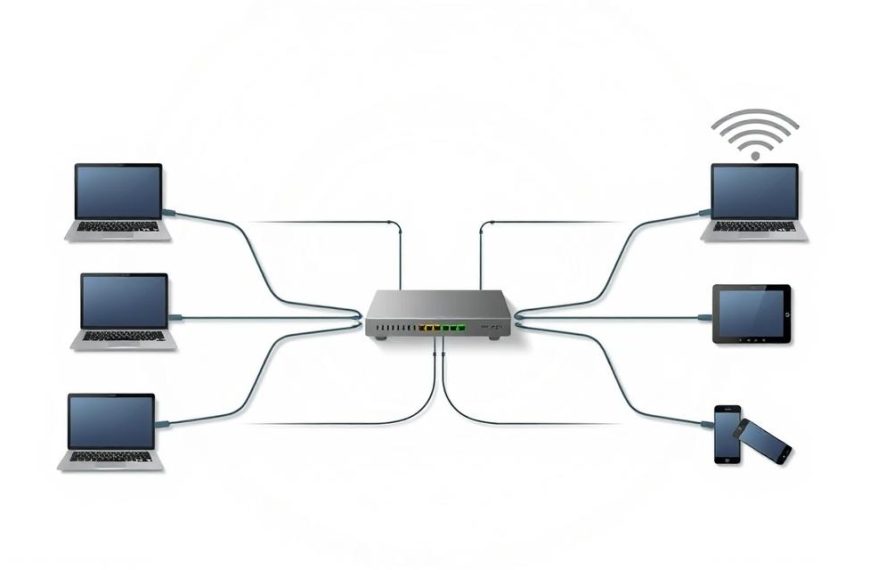Getting your network right starts with IP configuration. It gives your device a unique digital ID on any network.
Right settings mean devices talk to each other smoothly. They also get to share resources. Without the right address, your computer can’t join the network.
This guide will teach you the basics and how to set it up on various systems. You’ll learn how to do it automatically and manually.
Knowing these skills is key for fixing network issues and making it better. Let’s start your network learning journey.
Understanding IP Address Configuration
Before we get into the technical details of assigning network addresses, it’s key to understand the basics. This knowledge is the foundation for making smart choices about your network setup.
What is an IP Address?
An IP address is like a unique address for any device on a network. It’s similar to a postal address for mail. This number lets devices find and talk to each other on local networks or the internet.
IPv4 addresses have four numbers separated by dots. For example, 192.168.1.101 might be a computer’s address on a local network. Each number can be from 0 to 255, making billions of possible addresses.
Static vs. Dynamic IP Addresses
There are two main ways to assign IP addresses to devices. Knowing the difference is key for managing your network well.
A static IP address never changes. It’s set manually on each device. This ensures devices always have the same address, which is good for things that need to be always connected.
A dynamic IP address changes automatically. It’s given out by a DHCP server and can change often. This makes it easier to manage IP addresses and use them more efficiently.
| Feature | Static IP Address | Dynamic IP Address |
|---|---|---|
| Assignment Method | Manual configuration | Automatic via DHCP server |
| Address Consistency | Permanent and unchanging | Subject to change over time |
| Administration Overhead | Higher maintenance required | Minimal administrative effort |
| Ideal Use Cases | Servers, network printers | General workstations, mobile devices |
| Address Conflict Risk | Higher if not properly managed | Lower with proper DHCP setup |
Why Proper Configuration Matters
Getting IP addresses right is vital for network performance and reliability. It stops address conflicts that can cause problems with connections.
Good setup means devices can talk to each other smoothly. This makes data sharing and accessing network resources easy. It also helps with services like file sharing and remote access.
Security is another big reason for proper setup. It helps protect against unauthorized access and makes it easier to keep an eye on network activity. It also makes troubleshooting easier when issues come up.
For businesses, the right IP setup keeps things running smoothly and cuts down on downtime. At home, it means stable connections for streaming, gaming, and smart devices that need a steady network address.
Methods of Assigning a Network Address to Your Computer
When setting up your computer’s network, you have two main ways to assign an IP address. Each method has its own benefits, depending on your needs. Knowing these options helps you choose the best for your network.
Automatic Configuration via DHCP
The Dynamic Host Configuration Protocol (DHCP) automatically gives Internet Protocol addresses to devices. This makes managing your network easier, as you don’t need to do it manually.
DHCP servers give out all the network details you need, like:
- IP addresses from a set pool
- Subnet mask info
- Default gateway addresses
- DNS server settings
Most homes and businesses use DHCP by default. It makes setting up your network simple and reduces mistakes. Devices can connect easily without needing to know about network settings.
DHCP uses a four-step process called DORA: Discovery, Offer, Request, and Acknowledgement. This ensures devices get their IP addresses smoothly and avoids conflicts.
Manual Configuration for Static IPs
Setting a static IP address means it stays the same all the time. This gives you full control over your network and ensures devices always have the same address.
You might need a static IP for:
- Network servers that need a fixed address
- Printers and devices that always use the same IP
- Port forwarding for gaming or apps
- Remote access systems that need a consistent address
To set a static IP, you need to know your network’s addressing scheme. You’ll have to pick an IP address that’s not in your DHCP range to avoid problems. For more help, see our guide on how to set up a static IP.
The table below shows the main differences between DHCP and manual IP settings:
| Feature | DHCP (Automatic) | Static (Manual) |
|---|---|---|
| IP Address Stability | Changes often | Stays the same |
| Configuration Effort | Little setup needed | Needs manual input |
| Conflict Management | Prevents automatically | Needs manual check |
| Best Use Cases | General devices, clients | Servers, network gear |
| Network Changes | Adapts easily | Needs reconfiguring |
Whether to use DHCP or a static IP depends on your network needs. DHCP is simple for most users. But network admins often prefer static IPs for important devices.
Step-by-Step: Configuring IP Address on Windows
Microsoft Windows lets you manage your computer’s network identity in different ways. The steps might change with each version, but the main ideas stay the same.
Accessing Network Settings in Windows
To start setting up your Windows network, find the right control panel. Modern Windows has two main ways to do this.
Using Control Panel in Windows 10 and Earlier
In Windows 10 and earlier, the Control Panel is where you go. Here’s how to get there:
- Open the Start menu and type “Control Panel”
- Select Network and Internet > Network and Sharing Center
- Click “Change adapter settings” in the left-hand menu
- Right-click your active network connection and choose Properties
- Select Internet Protocol Version 4 (TCP/IPv4) and click Properties
Using the Settings App in Windows 11
Windows 11 makes it easier with its Settings app. It’s designed to be more user-friendly:
- Press Windows key + I to open Settings
- Navigate to Network & Internet > Ethernet or Wi-Fi
- Click on your active network connection
- Scroll down to IP assignment and click Edit
Assigning a Static IP Address Manually
Setting a static IP address gives your device a fixed identity. It’s great for servers, network printers, or when you need to forward ports.
After you get to your network adapter properties:
- Select “Use the following IP address”
- Enter your desired static IP address (e.g., 192.168.1.50)
- Input the subnet mask (usually 255.255.255.0)
- Specify the default gateway (your router’s IP address)
- Provide preferred DNS server addresses
- Click OK to apply your changes
Important consideration: Make sure your static IP is outside your router’s DHCP range to avoid conflicts.
Switching Back to Automatic DHCP
Going back to automatic IP makes things easier for most users. DHCP handles IP assignment, reducing mistakes and conflicts.
To switch back to automatic IP:
- Access your network adapter properties as described previously
- Select “Obtain an IP address automatically”
- Choose “Obtain DNS server address automatically”
- Click OK to confirm your changes
Your system will ask for a new IP address from your network’s DHCP server. This usually happens quickly, and you won’t need to reboot.
For those who want more details, use Command Prompt. Type “ipconfig /all” to see your current IP address, subnet mask, and default gateway.
Step-by-Step: Configuring IP Address on macOS
Apple’s macOS makes setting up networks easy with its System Preferences. It’s different from other systems because it works well with Apple devices. It also has strong networking features.
Opening Network Preferences on macOS
To start, click the Apple menu in the top-left corner. Choose System Preferences, then Network. Or, use Spotlight search by typing “Network Preferences” with Command + Space.
The Network window shows all your connections. Pick your active one from the left to see its settings.
Setting a Manual IP Address
To set a static IP, click Advanced in the Network window. Go to the TCP/IP tab for settings.
Choose “Manually” from the Configure IPv4 dropdown. You’ll need to enter four things:
- IP Address: Your chosen static address
- Subnet Mask: Usually 255.255.255.0 for home networks
- Router: Your network’s gateway address
- DNS Servers: Primary and secondary DNS addresses
Enter these details, then click OK and Apply. Your Mac will use the new IP address right away.
Best Practices for macOS Users
Here are tips for setting up static IP addresses on macOS:
- Make profiles for different networks (home, office, etc.)
- Keep track of your IP assignments to avoid problems
- Use Network Utility’s Ping tool to test connections
- Check your DNS settings often for better performance
For those with many Apple devices, make sure your IP settings don’t mess with Bonjour or AirPlay. The macOS network settings give clear feedback if something’s wrong.
Remember, manual IP settings stay the same after restarting. But, you’ll need to change them if you switch networks. Most users find it best to use DHCP as the default and only use manual settings when needed.
Step-by-Step: Configuring IP Address on Linux
Linux systems offer flexible ways to set up networks. They are great for both those who love the command line and those who prefer graphical interfaces. Unlike Windows and macOS, Linux lets you control your network settings in detail.
Each Linux distribution has its own way of setting up networks. But the basic steps are the same. Knowing these steps helps you manage your network settings well, no matter the distribution.
Using Command Line Tools for IP Configuration
Command-line tools are the best way to change network settings on Linux. They let you make quick changes and see exactly what’s happening with your network. This is why system administrators often prefer them.
Two main commands are used for network setup: ip and ifconfig. While they do the same thing, knowing the difference helps you pick the right tool for your job.
Configuring with the ip Command
The ip command is the modern way to manage networks on Linux. It’s more consistent and has more features than older tools.
To give a static IP address with the Linux ip command, use this:
sudo ip addr add 192.168.1.100/24 dev eth0
This command gives the address 192.168.1.100 with a 24-bit subnet mask to the eth0 interface. The changes are immediate but won’t stay after a reboot without extra steps.
Configuring with the ifconfig Command
The ifconfig command is the old way to set up network interfaces. It’s not used as much now but is known by many experienced users.
To set a static IP with ifconfig:
sudo ifconfig eth0 192.168.1.100 netmask 255.255.255.0
This does the same as the Linux ip command but in a different way. Many people like ifconfig because it’s familiar, but the ip command has more features.
Graphical Interface Methods in Ubuntu and Other Distributions
For those who like visual tools, most Linux distributions have graphical network managers. Ubuntu’s Network Manager is easy to use for setting up wired and wireless connections without needing the command line.
To use these settings in Ubuntu:
- Click the network icon in the system tray
- Select “Network Settings” or “Edit Connections”
- Choose your network connection and click the gear icon
- Navigate to the IPv4 or IPv6 tab
- Select “Manual” configuration and enter your address details
Other distributions like Fedora, Debian, and Mint also have similar tools. Their looks and locations might differ, but they usually offer options for DNS servers, routes, and more.
Persisting Configuration Changes
Changes made at the command line usually reset after a reboot unless saved to configuration files. To keep settings after a reboot, you need to edit system files that control network settings at startup.
Different distributions use different files for this:
- Debian/Ubuntu: /etc/network/interfaces
- Red Hat/CentOS: /etc/sysconfig/network-scripts/
- Arch Linux: netctl profiles or systemd-networkd
In Ubuntu, add these lines to /etc/network/interfaces to make IP settings permanent:
auto eth0 iface eth0 inet static address 192.168.1.100 netmask 255.255.255.0 gateway 192.168.1.1
After editing these files, restart the networking service or reboot to apply the changes. Always check your connection after making these important changes.
Knowing how to use both command-line and graphical tools for the Linux ip command and other tools means you can handle network setup in any situation. Whether you’re just testing settings or setting up something permanent, Linux gives you the flexibility you need.
Troubleshooting Common IP Configuration Issues
Network problems can pop up even with careful setup. These issues often come from IP address conflicts or wrong settings. To fix these, you need a clear plan to find and solve the problems.
Resolving IP Address Conflicts
IP address conflicts happen when two devices use the same IP on a network. This causes trouble and can make internet access go up and down. You might see error messages or lose network access suddenly.
To spot an IP conflict, look out for system alerts about duplicate IP addresses. You can also use command line tools. On Windows, ipconfig shows your IP settings, and arp -a lists devices talking to your computer.
To fix conflicts, follow these steps:
- Release and renew your IP address with
ipconfig /releaseandipconfig /renew - Check if static IP settings clash with DHCP ranges
- Restart network devices to clear any lease issues
- Adjust your DHCP scope to avoid future conflicts
Fixing Connectivity Problems After Configuration
Internet access might vanish after setting static IP settings. A common issue is seeing “DHCP is not enabled for ‘Ethernet'” with a static IP. This usually means you’ve got the wrong gateway or DNS settings.
To tackle connectivity issues after changes, start with these steps:
- Make sure your default gateway matches your router’s IP
- Double-check your DNS server addresses
- Ensure subnet mask values fit your network design
- Use ping commands to test your gateway connection
The “DHCP not enabled” error often points to DNS problems, not IP issues. Even with a static IP, some systems need DHCP for DNS. Setting DHCP for DNS while keeping your static IP can fix this.
The table below shows common problems and how to solve them:
| Problem Symptom | Possible Cause | Recommended Solution |
|---|---|---|
| No internet access with valid static IP | Incorrect gateway or DNS settings | Verify and correct network configuration parameters |
| Intermittent connectivity | IP address conflict | Release/renew IP or check for duplicate addresses |
| Limited connectivity warning | Missing DNS configuration | Add DNS server addresses or enable DHCP for DNS |
| Network identification changes | Subnet mask mismatch | Ensure consistent subnet mask across all devices |
For ongoing issues, you might need more detailed troubleshooting. Resetting network parts with netsh winsock reset on Windows can help. Keeping detailed records of static IP settings can also prevent future problems.
Conclusion
Setting up your IP address right is key for a stable network. You can choose between automatic DHCP or a manual static IP. Each has its own benefits for keeping your network running smoothly.
Windows, macOS, and Linux all have tools to help with this. You can use graphical interfaces or command-line tools. These options make it easy to manage your network settings.
Before making any changes, check your settings and know what your network needs. This helps avoid problems and keeps everything working well. Good setup is important for both small and big networks.
If you need more help, look for detailed guides or talk to networking experts. Keeping up with new tech is important for managing your network well.

















